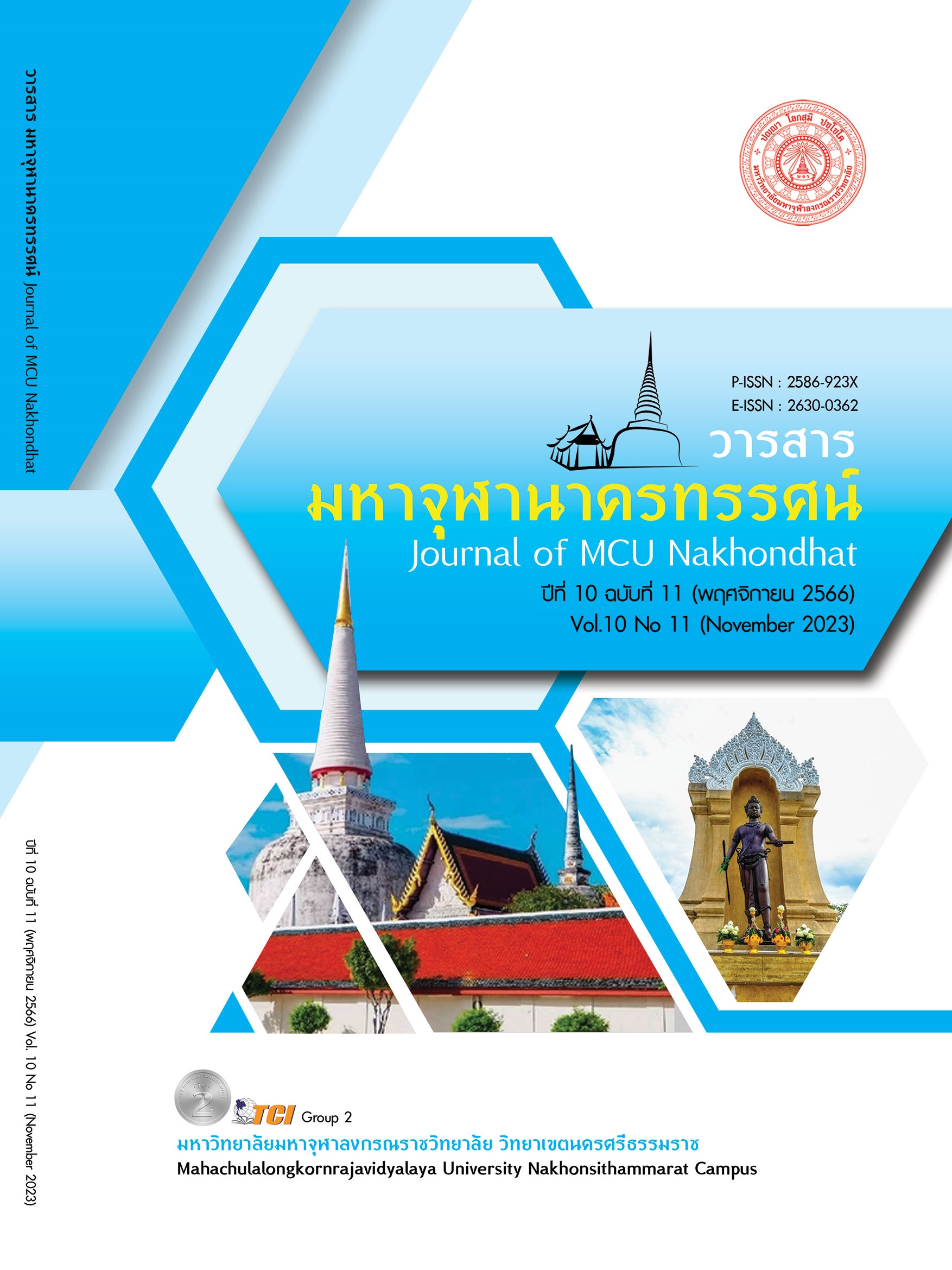AN ANALYTICAL STUDY OF KAMA IN NIBBEDHIKASUTTAVANNANA: CAUSES AND TACTICS FOR SOLVING ACCORDING TO BUDDHIST CONCEPTS
Main Article Content
Abstract
This academic article aims to present an analytical result of Nibbedhikasuttavannana about definition of Kama, desire, sensuality as difference manner by terms, fruit of Kama, cessation of kama, and strategies to restoration. The beginning of the problem arises from avijja. The problem is where does ignorance come from? how did it happen? in spite of the fact that the Buddha taught how to suppress or extinguish all sensual sensations, the problem therefore arises that how can we remove the obstacles blocking the extinguisher of sexual desire? As long as we are under the influence of our desires, there will be a drive to cause a lot of suffering.
The results of the study found that Ignorance arises from the mind being dominated by defilements. and obscure wisdom It causes animals to see distortions in their physical, verbal, and mental actions according to the influence of sensual feelings through the five sense organs in human daily life. and the way to remove obstacles blocking the extinguisher of sexual desire is the path that leads to the extinguishment of sexual desire. Awareness of the dangers of sexual desire Including the benefits of being restrained in sex. as well as methods for avoiding sensual pleasures by extinguishing the senses by using the principles The Noble Eightfold Path. This article draws on the contents of monks, scholars and laypeople who study the story of kama in various concepts, transfer knowledge through academic articles or textbooks and bring it Analyze with principles related to sensuality according to Buddhist science. In a comparative manner, whether the concepts and principles in the Tripitaka are different in some points or not. If so, what would be the issue? does such a concept result in any knowledge or understanding for those interested in studying it? to be used to effectively extinguish lust.
Article Details

This work is licensed under a Creative Commons Attribution-NonCommercial-NoDerivatives 4.0 International License.
References
พระธรรมกิตติวงศ์ (ทองดี สุรเตโช). (2548). พจนานุกรมเพื่อการศึกษาพุทธศาสน์ ชุดคำวัด. กรุงเทพมหานคร: โรงพิมพ์ธรรมสภาและสถาบันบันลือธรรม.
พระพรหมคุณาภรณ์ (ป.อ.ปยุตฺโต). (2546). พจนานุกรมพุทธศาสน์ ฉบับประมวลศัพท์. (พิมพ์ครั้งที่ 10). กรุงเทพมหานคร : โรงพิมพ์สหธรรมิก.
มหาวิทยาลัยมหาจุฬาลงกรณราชวิทยาลัย. (2564). พระไตรปิฎกฉบับภาษาไทย ฉบับมหาจุฬาลงกรณราชวิทยาลัย. กรุงเทพมหานคร: โรงพิมพ์มหาจุฬาลงกรณราชวิทยาลัย.
ราชบัณฑิตยสถาน. (2556). พจนานุกรมฉบับราชบัณฑิตยสถาน พ.ศ.2554. (พิมพ์ครั้งที่ 2). กรุงเทพมหานคร: นานมีบุ๊คส์.
สมานิศ วิจิตร. (2561). ความหมายของยุทธศาสตร์และยุทธวิธี. เรียกใช้เมื่อ 9 กรกฎาคม 2564 จาก http://samanit.blogspot.com/2008/09/blog-post_22.html
เสรี พงศ์พิศ. (2548). เครือข่าย: ยุทธวิธีเพื่อประชาคมเข้มข้นชุมชนเข้มแข็ง. กรุงเทพมหานคร: โครงการมหาวิทยาลัยชีวิตสถาบันการเรียนรู้เพื่อปวงชน.
ปราโมทย์. (2543). อุบายสู้กาม. เรียกใช้เมื่อ 8 กรกฎาคม 2564 จาก http://www.dhammada.net/wimutti/ lD00000152.htm
Britannica, E. (2009). Kama. Chicago: Britannica Educational Publishing.
Joanna, M. (1975). The Dialectics of Desire. Numen. (BRILL). JSTOR 3269765, 22(2), 60 - 145.
Kama Shastra Society. H. (1925). The Kama Sutra of Vatsyayana. Benares. New York: Printed for the Society of the Friends of India.
Roche, L. (2017). "Love-Kama". Retrieved December 1, 2023, from http://samanit.blogspot.com/20 08/09/blog-post_22.html
Sharma, A. (1999). The Purusarthas: An Axiological Exploration of Hinduism. The Journal of Religious Ethics, 27(2), 223 - 256.
Walailoo. (2014). The Subtle of Sensual Desires. Retrieved July 8, 2021, from https://walailoo2010. wordpress.com/2014/04/28/
Williams, M. (1992). Kama Monier - Williams Sanskrit English Dictionary, pp 271, see 3rd column. New York: Oxford University Press.


